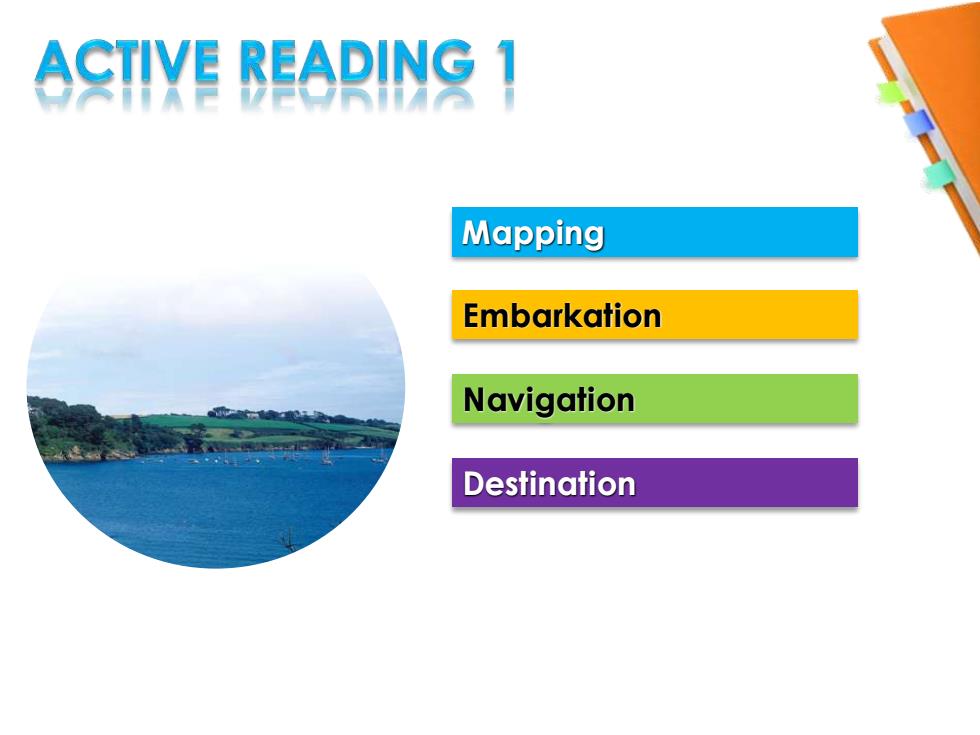
1 ACTIVE READING Mapping Embarkation Navigation Destination
Mapping Embarkation Navigation Destination
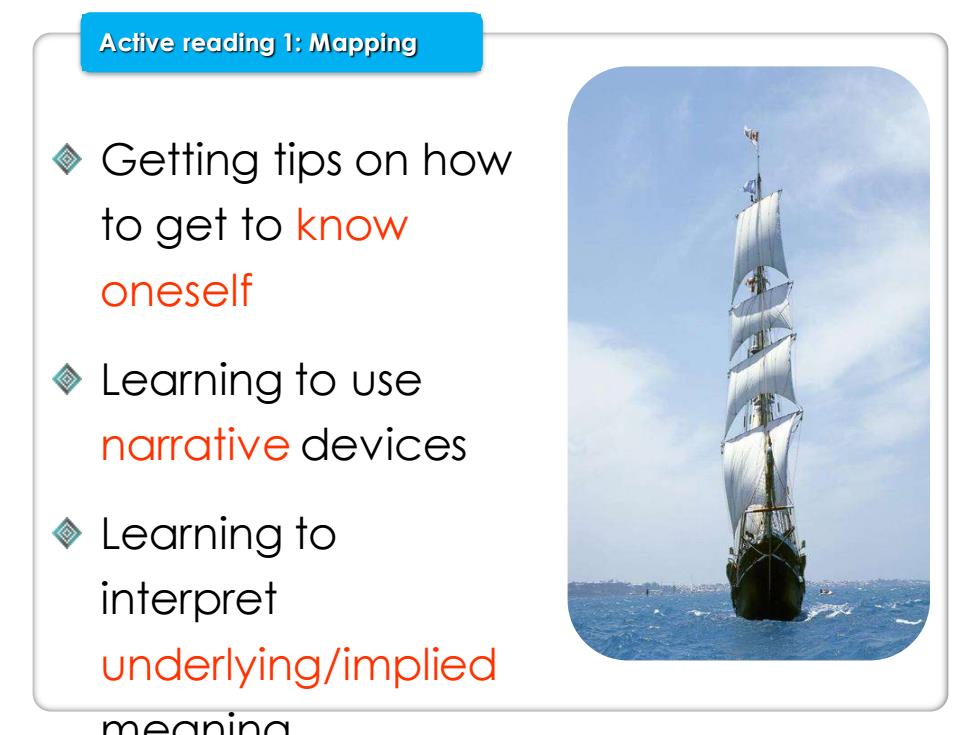
Active reading 1:Mapping Getting tips on how to get to know oneself Learning to use narrative devices Learning to interpret underlying/implied meaning
Getting tips on how to get to know oneself Learning to use narrative devices Learning to interpret underlying/implied meaning Active reading 1: Mapping
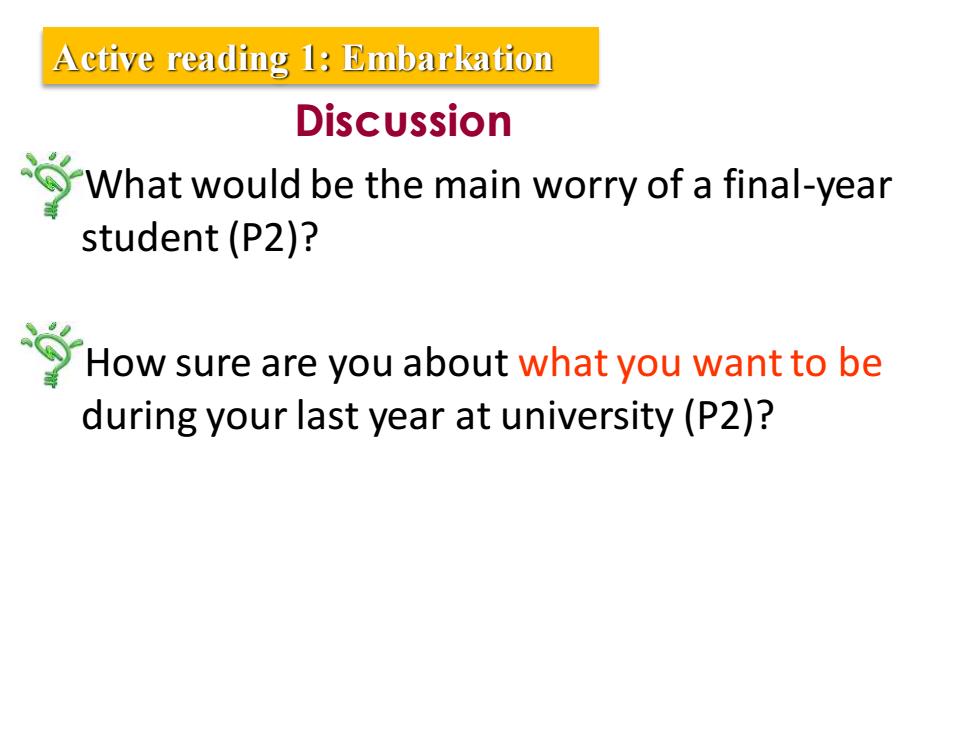
Active reading 1:Embarkation Discussion What would be the main worry of a final-year student(P2)? How sure are you about what you want to be during your last year at university(P2)?
Discussion What would be the main worry of a final-year student (P2)? How sure are you about what you want to be during your last year at university (P2)? Active reading 1: Embarkation
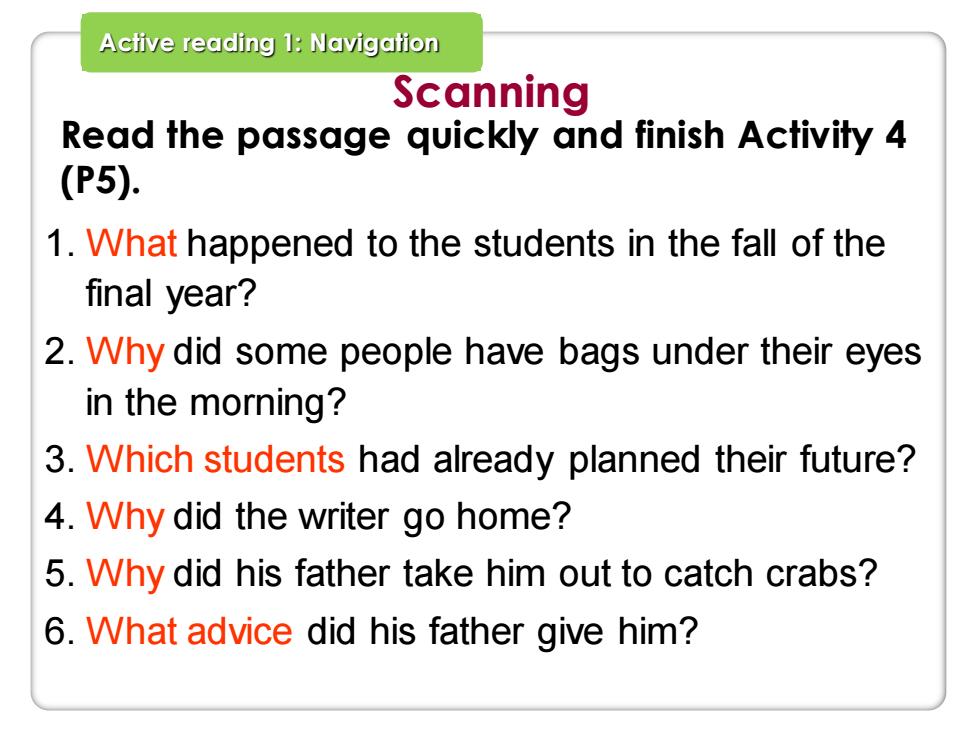
Active reading 1:Navigation Scanning Read the passage quickly and finish Activity 4 (P5). 1.What happened to the students in the fall of the final year? 2.Why did some people have bags under their eyes in the morning? 3.Which students had already planned their future? 4.Why did the writer go home? 5.Why did his father take him out to catch crabs? 6.What advice did his father give him?
Scanning 1. What happened to the students in the fall of the final year? 2. Why did some people have bags under their eyes in the morning? 3. Which students had already planned their future? 4. Why did the writer go home? 5. Why did his father take him out to catch crabs? 6. What advice did his father give him? Read the passage quickly and finish Activity 4 (P5). Active reading 1: Navigation
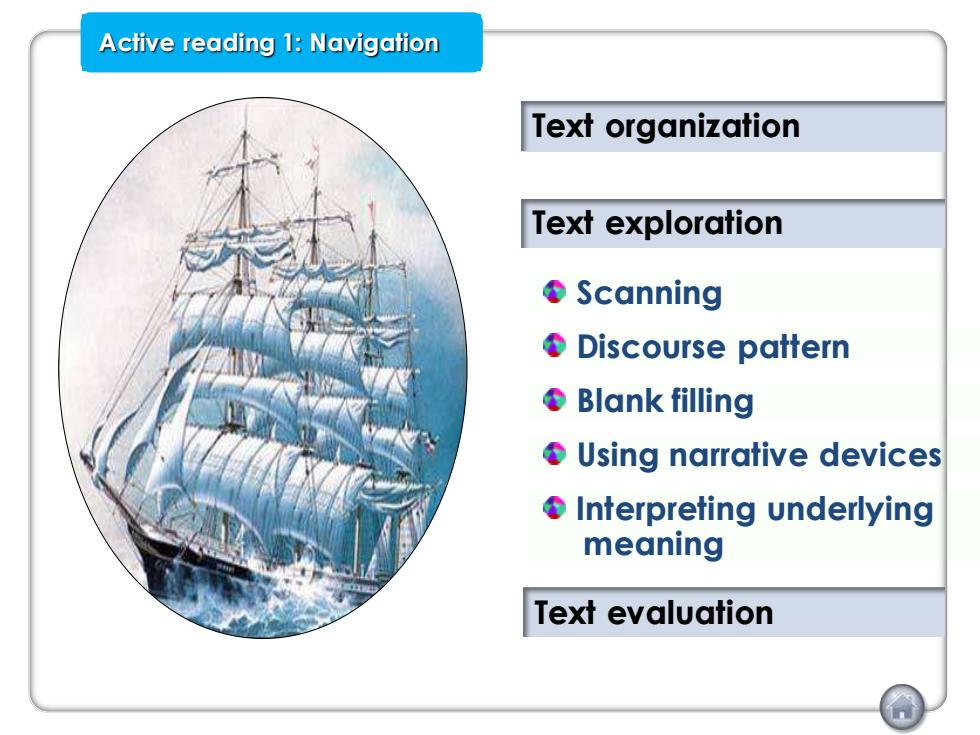
Active reading 1:Navigation Text organization Text exploration Scanning Discourse pattern Blank filling Using narrative devices Interpreting underlying meaning Text evaluation
Text exploration Text evaluation Active reading 1: Navigation Scanning Discourse pattern Using narrative devices Interpreting underlying meaning Text organization Blank filling
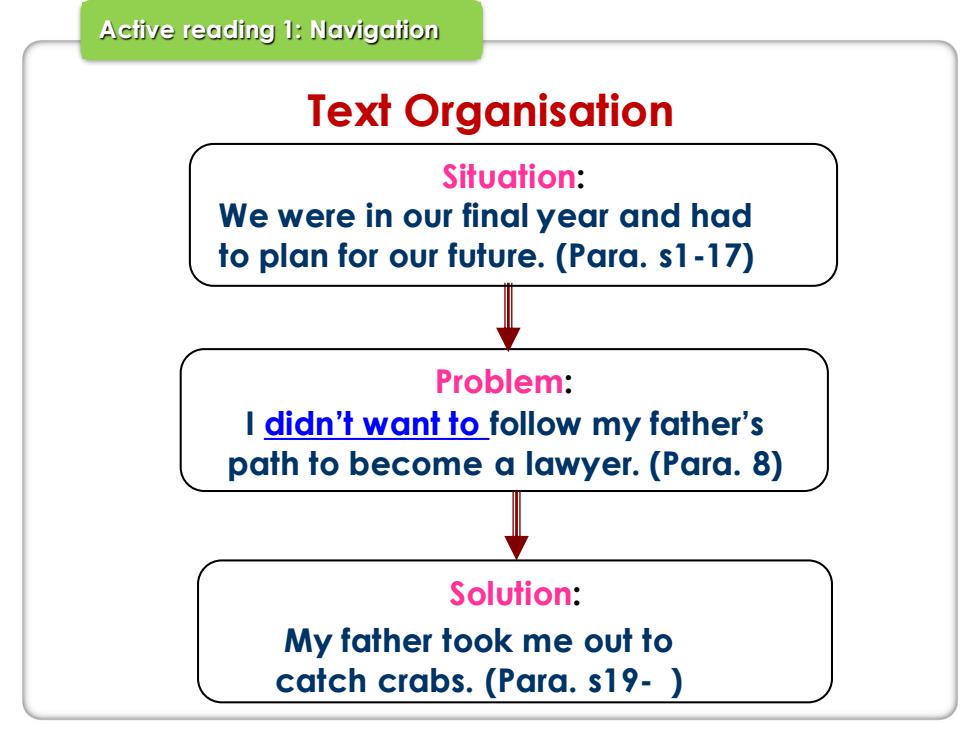
Active reading 1:Navigation Text Organisation Situation: We were in our final year and had to plan for our future.(Para.s1-17) Problem: I didn't want to follow my father's path to become a lawyer.(Para.8) Solution: My father took me out to catch crabs.(Para.s19-)
Text Organisation Active reading 1: Navigation Problem: Solution: Situation: I didn’t want to follow my father’s path to become a lawyer. (Para. 8) We were in our final year and had to plan for our future. (Para. s1-17) My father took me out to catch crabs. (Para. s19- )
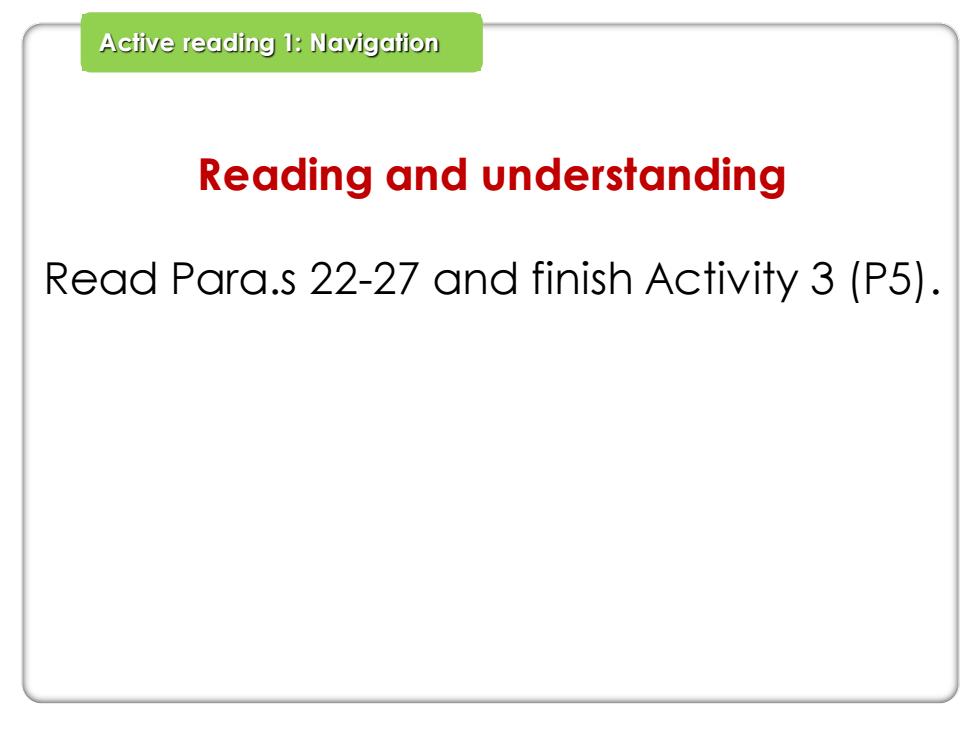
Active reading 1:Navigation Reading and understanding Read Para.s 22-27 and finish Activity 3(P5)
Reading and understanding Read Para.s 22-27 and finish Activity 3 (P5). Active reading 1: Navigation
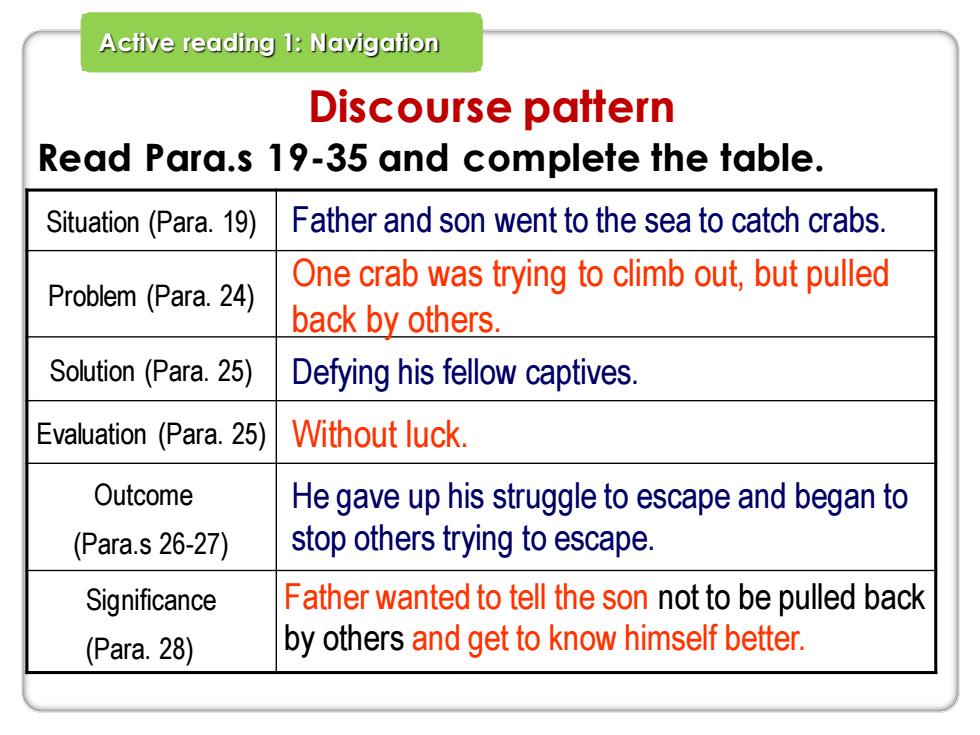
Active reading 1:Navigation Discourse pattern Read Para.s 19-35 and complete the table. Situation(Para.19) Father and son went to the sea to catch crabs. Problem (Para.24) One crab was trying to climb out,but pulled back by others. Solution (Para.25) Defying his fellow captives. Evaluation (Para.25) Without luck. Outcome He gave up his struggle to escape and began to (Para.s26-27) stop others trying to escape. Significance Father wanted to tell the son not to be pulled back (Para.28) by others and get to know himself better
Discourse pattern Active reading 1: Navigation Situation (Para. 19) Problem (Para. 24) Solution (Para. 25) Evaluation (Para. 25) Outcome (Para.s 26-27) Significance (Para. 28) One crab was trying to climb out, but pulled back by others. Defying his fellow captives. Without luck. He gave up his struggle to escape and began to stop others trying to escape. Father wanted to tell the son not to be pulled back by others and get to know himself better. Father and son went to the sea to catch crabs. Read Para.s 19-35 and complete the table
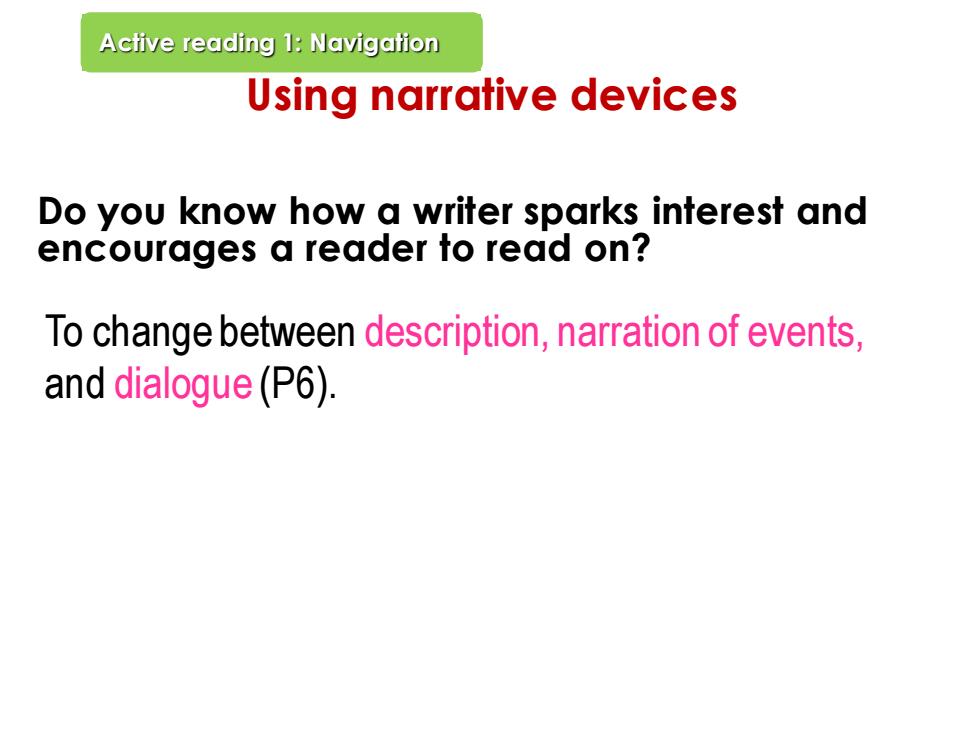
Active reading 1:Navigation Using narrative devices Do you know how a writer sparks interest and encourages a reader to read on? To change between description,narration of events. and dialogue(P6)
Using narrative devices Active reading 1: Navigation To change between description, narration of events, and dialogue (P6). Do you know how a writer sparks interest and encourages a reader to read on?
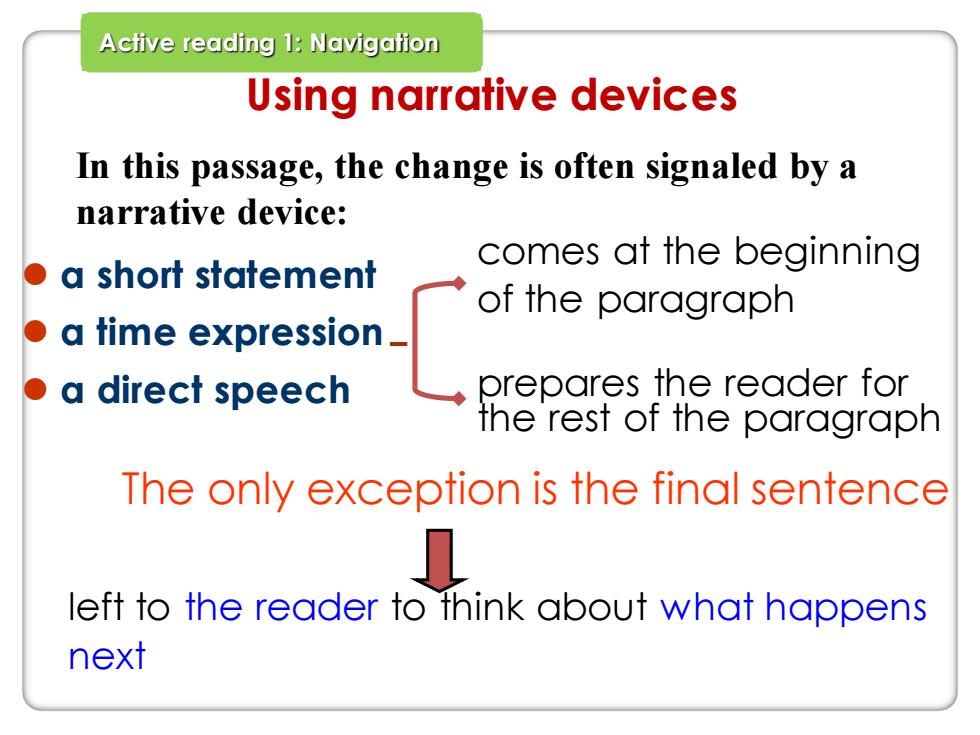
Active reading 1:Navigation Using narrative devices In this passage,the change is often signaled by a narrative device: comes at the beginning 。a short statement fime expresston- of the paragraph ●a direct speech prepares the reader for the rest of the paragraph The only exception is the final sentence left to the reader to think about what happens next
Using narrative devices Active reading 1: Navigation ⚫ a short statement ⚫ a time expression ⚫ a direct speech prepares the reader for the rest of the paragraph The only exception is the final sentence left to the reader to think about what happens next comes at the beginning of the paragraph In this passage, the change is often signaled by a narrative device: